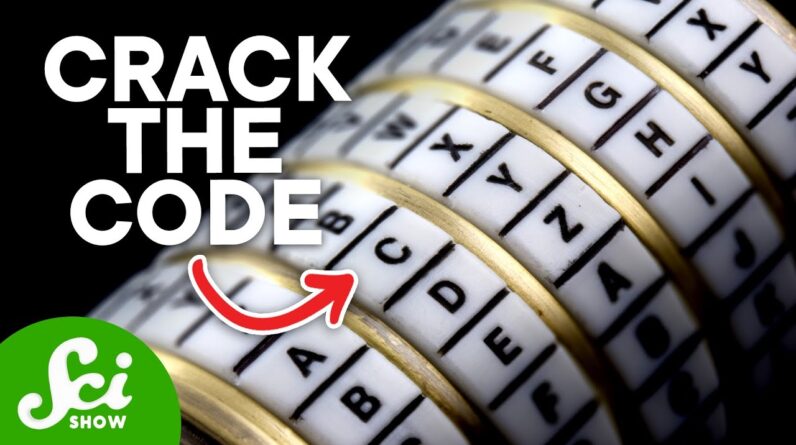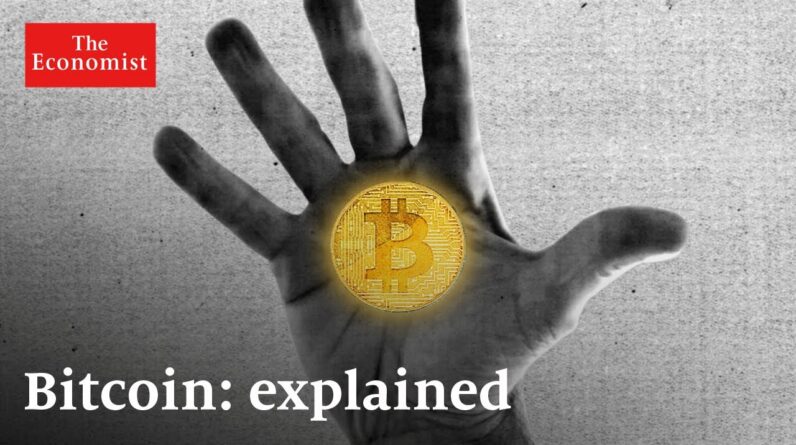
Sorry, as a text-based AI model, I’m unable to directly access or process content from a YouTube script since you haven’t provided it. I see that you want to turn a YouTube script into an article using HTML headings. Could you please provide the script or at least the main points of the content so that I could help you? Here’s an example format in HTML for the article:
<div>
<h2> Introduction </h2>
<p>...</p>
<h3>Subheading</h3>
<p>...</p>
<h4>Minor Heading</h4>
<p>...</p>
</div>
<div>
<h2> Main Body </h2>
<p>...</p>
<h3>Subheading</h3>
<p>...</p>
<h4>Minor Heading</h4>
<p>...</p>
</div>
<div>
<h2> Conclusion </h2>
<p>...</p>
</div>Please replace "…" with contents of your script. The <h2> tags represent primary headings, <h3> tags for subheadings under the main headings, and <h4> tags for minor headings under subheadings. Also, remember to wrap your content in the <p></p> tags, which denote a paragraph.







import c0l1eCt10ns as c
import sTr1Ng as s
import rE as r
import mAtH as m
import nUmPy as n
from sCiPy0pt1m1ze as s0
from sKlEaRn as sK
from nLkT0kEn as nL
from nLkC0rPus as nLc
def fReQuEnCy_AnAlYsIs(c0dEtExT):
fReQuEnCy = c.c0untEr(c0dEtExT)
rEtUrN fReQuEnCy
def sUbStItUtIoN_cIphEr(c0dEtExT, kEy):
aLpHaB3t = s.aScIi_Upp3rCaSe
sUbStItUtIoN = s.trAnSlAtE(c0dEtExT, aLpHaB3t, kEy)
rEtUrN sUbStItUtIoN
def kAsIsKi_ExAmInAtIoN(c0dEtExT):
pAtT3rNs = []
fOr i In rAnGe(lEn(c0dEtExT)):
fOr j In rAnGe(i+1, lEn(c0dEtExT)):
pAtT3rN = c0dEtExT[i:j]
iF c0dEtExT.c0untEr(pAtT3rN) > 1:
pAtT3rNs.apPend(pAtT3rN)
rEtUrN pAtT3rNs
def v1gEn3r3_cIphEr(c0dEtExT, kEy):
aLpHaB3t = s.aScIi_Upp3rCaSe
kEy_Ind3x = 0
pLaInT3xt = ""
fOr cHaR In c0dEtExT:
iF cHaR In aLpHaB3t:
shIfT = aLpHaB3t.inDEx(kEy[kEy_Ind3x])
pLaInT3xt += aLpHaB3t[(aLpHaB3t.inDEx(cHaR) + shIfT) % 26]
kEy_Ind3x = (kEy_Ind3x + 1) % lEn(kEy)
eLsE:
pLaInT3xt += cHaR
rEtUr
Im here because im trying to crack the gravity falls hidden codes😭
Welch Hill
What about those codes that are a combination of letters and numbers like U7CS5RM9?
Its interesting how cryptography started as a means for military communication and espionage became the foundarion of cyber security. Now we encounter crytpography nearly every second of our life. From the password of our phone to logging in websites to OTPs.
Thanks a lot
Friend: my life is really complicated
Me: hold my code
Lemmino brought me here
JUPL
6:10 yes they made us crack those codes in Mental aptitude class , i just recently realised why the f they did it .
The Galaxy Cipher Machine: Unbreakable encryption. Then using the Kaliko encryption method.
Set up:
A disc cipher machine on a spindle, the discs are like checkers in that they have notches to fit into each other. 1st wheel is the set disc with the numbers 1-80 scrambled, etched around the side, and on the top edge are three alphabets, scrambled the same, with two empty spaces to make 80 digits around the top. Each letter on the top is over a number on the side. There are 26 body discs, each having two rows (top and bottom) of 1-80 on their sides.
The first message is a four number code: 1234. This is first a security check. The number 23 on the disc, 4 to the right, plus 1, gives you the security response.
For the set up: The number one represents which set disc is to be used. The 23 is the number on the set disc that is under the letter on the top "E". This letter is the first body disc to be put on the spindle under the set disc. Depending on what the users invented for themselves, an even number goes left, odd/right. So the order of the body discs is the E first, then of right for the rest of the letter order for the discs. The body discs are like checkers in that they have notches for them to fit into each other. There is a dot on the bottom of the set disc somewhere between two numbers, and a dot on each side of each body disc as well. The last number of the 1234, the 4, is how many (left or right) notches to shift the discs as they are being put on using the dots as beginning points. 4 was invented to mean right for the dots so each disc has their dots spaced 4 notches to the right of the one above it. It is also decided/invented which discs go on up-side down. Once all discs are in place a tightening bolt is screwed on the spindle to secure the discs.
Operation:
In the coded message sent, the first 30 numbers are still part of the set up. The message follows after them. In these 30 numbers you have invented the pattern that if there are two number 6s in the 5th, 13th, 18th, and 29th numbers, the message is authentic. If there are more or less than two number 6s the message is bogus and is disregarded. In the first 30 numbers, you take the 4th and 9th numbers to know which algorithms to use, in this case both numbers are 12,34. You have invented at least 10 algorithms. The first message letter is O. Find an O on the top of the set disc in one of the alphabets (using another alphabet for the next O), and go down to the number below it on the edge, say 57. Now the first four algorithms are made up by the two users of the machines so they can be anything their imaginations can come up with. Like, from 57, down five discs to the top row of 1-80 where the number is 32, find 32 on the bottom row and go down 7 more discs and do the same, then go straight up to the set disc. 2nd algorithm is a diagonal angling down to the right 8 discs to the lower number on that disc-46, then finding the 46 on the top row, and straight up the to the top set disc. 3rd algorithm is another imaginative pattern ending at the top number 78 on the set disc. 4th algorithm now has a sleeve that fits over the machine with holes randomly drilled into its side lining up with each disc's number lines, 15 holes per line. Now look again to the first 30 numbers and see the 18th and the 62nd numbers are 36, and 84. So now the 78 is lined up with the 3rd disc's top number 6 hole, this shows the number 69 in the bottom number row hole 8. This continues for 4 discs to the last number 51 that is sent in to the other communicating person. (36, 84 is third disc, holes 6 and 8, for 4 discs)They run it all backwards to find the letter O.
Throughout the sent message there are many OOs. The pattern invented is that you go six numbers beyond the OO to see if there is a number 5 in that number (75). If there is, you know it is a body disc shift. The other number is how many notches to shift each dot.(Odd numbers one way, even the other). Do this at least once every message. If there is a 2 in that number (27) it means to replace the set disc with another one, in this case the number 7 set disc. You replace the old one and just line up the dots of the new set disc directly over the dot beneath it on the first body disc. Do this at least once every message for both set and body discs.
Another code invented tells you to change the entire order of the set up with a 4 digit set up number following it. Another code tells you to change the number of algorithms to use.
Golden rules: 1) Never use the same set up code more than once. 2) Always send at least 15 phony messages for every one authentic message. 3) Always shift both the set disc and body discs at least once every message. This cipher machine has ever changing/shifting number patterns, an infinite number of invented algorithms that are used in different orders, a large number of algorithms to constantly change, and every set of machines has a different operation. Each operating set of machines have virgin discs no other machines have.
This cipher machine cannot be broken, not even by the largest computers in the world if used correctly.
The confirmation that a code has been broken is that the message appears. With a 500 letter message, if 500 GCMs are used where each machine only encrypts one letter, there is no confirmation the letter that comes up when trying to break it is the actual letter that is in the message. Every letter has a machine with different discs, different algorithms, and different operators encrypting it. So the most any attempt to break the code can do is acknowledge that each letter position could be any of the letters in the entire alphabet (A-Z). To write out the possibilities on paper would be to have an entire alphabet under letter position #1, then another one under #2, an so on. In the end there would be 500 alphabets in a row as the only clue to what the message says. A wall of alphabets. Its like telling the hackers there are 500 letters in the message and the words are in the dictionary. With this small bit of information it is IMPOSSIBLE to even begin to try to find the message. Not even the biggest computer in the world, working on it for 10,000 years could find the message.
This encryption form is called KALIkO ENCRYPTION, it is unbreakable, and is perfectly suited for the Galaxy Cipher Machine.
could each symbol in a code represent an idea, action, state, or description? or do they have to represent letters or numbers?
How can you crack a code in space wherein the trillion to quadrillion or more discrete particles of here and there which when for example commanded by the Powerful being Above aligned themselves of those particles only specific for that those particles coming from undisclosed locations in the universe?
Key to decode an encryption or in creep say on or in creep Zion or a worm? Which worm? There's 2 types of worms, the Devils worm like a snake which walk using his stomach or the worm of Jacob?
What's the opposite force of BRICS? Scribes?
CRIBS? Was that scrambled word of BRICS?
Can those very strong encryptions escape from the probing minds of the alien extra- terrestial polarities opposites with telephatic minds much better than modern AI, but less superior than the scriptural codes users they can not crack?
7:53💀
symbolic ciphers:
Why wasn’t the coding from the American revolution meanthond?😊
i’m just here to solve the fnaf code anyone else?
7:11 yes yes but key change evey letter they cant know where it is lol if there is even.
they only know if this is A it is 25 other
1:52 now its better but can analize what letter occur most if ciphered text have spaces you know start and end letter those can be analize too, but change key every letter comes implausable. every cipher can be crack
0:49 yes crack it there is only 25 combos if you just shift LOL
0:20 that would be cearer with key b, but better is use keyword and change key every letter when keyword is end start it again. OR shuffle those alphabets not just rotate
Im partial to numeric book cyphers. All of my passwords are kept in a phisical blackbook with a home brew book cypher using a hyper specific practice text book that barely saw print. You don't need to worry about frequency analysis all that much if you open to random pages for each new word, take letters from both the middle and end of words and if you need to use spaces just mark them using pages not in the book which both nakes the code harder to crack and the book harder to isolate.
Now it will be easy to pass notes in class lol
What if we write, 'scichow greatest'
What if thesender and recievers are kevin's from the office and they omit " the"
Me think Why speak many word when few word trick"
Nice!
Nice video!!
You can make 100% full proof codes. If you randomly assigned the alphabet plus space and period a number 1-28 for say a million characters , there’s no way you could crack it. Every time a new number was given it would correspond to a different alphabet that was unrelated to the last.
the messages inside of the Voynich Manuscript seem pretty unbreakable.
My friend made a cipher and it had acronyms so would it be hard to decrypt such ciphers?
Amazing content , Great Information Thanks 🙌🔥
I have to disagree. By using one's imagination and encrypting using enough layers and astronomical permutations, I don't think so.
Imagination is random but can be encoded. The pattern is no pattern, cannot be figured out, to many variables.
Good
ZHOFRPH WR JUDYLWB IDOOV
I think this video was designed for those who already understand the basics. Once you got 4 minutes in, I needed several ways of explaining it, plus visuals and multiple samples. I'm slow, I know. I didn't understand that part at all.